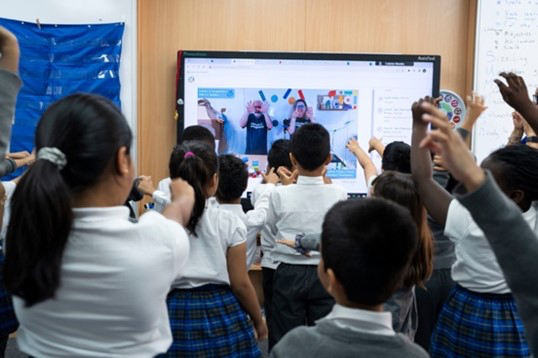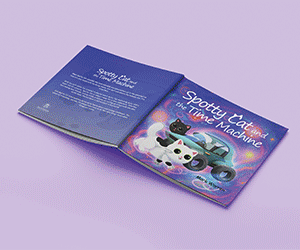Primary Times - the definitive what’s on and where to go family guide of activities and events for children of primary school age. Things to do with your kids during the school holidays including arts and craft activities, music and theatre for children, parties, competitions, days out, and family attractions along with term time drama schools, dance classes, after school clubs and sports activities. Things to do at a place near you!
Why imagination is the most underrated classroom resource
 Carrie Anne Philbin MBE, Director of Learning at the Institute of Imagination, former teacher and host of Crash Course Computer Science YouTube series, discusses how and why we need to better understand the potential and impact of our imagination and its capacity to support children and young people’s learning about the world and how they respond to its emerging challenges.
Carrie Anne Philbin MBE, Director of Learning at the Institute of Imagination, former teacher and host of Crash Course Computer Science YouTube series, discusses how and why we need to better understand the potential and impact of our imagination and its capacity to support children and young people’s learning about the world and how they respond to its emerging challenges.
We find ourselves in a rapidly changing world where disruption and change have become the norm. We know that tremors of political, economic, technological, and social change have, at times, brought turbulence to our education system, and local communities too. Indeed, uncertainty, can all too often feel like the only certainty of this decade.
Teachers are at the forefront of navigating challenges faced by children and their families. Schools remain anchors of our communities, and we each cultivate classrooms that are supportive and safe environments for children to aspire, grow and learn. It is our duty to develop their knowledge, skills, and resilience. Every day, we shape future generations to be the leaders of tomorrow.
However, a glaring challenge confronts the profession: 65 percent of children will work in jobs that do not exist yet.So how can educators prepare students for a future that is just so difficult even for us grown-ups to predict? It is time for us to all use our imagination.
In this golden age of artificial intelligence (AI), machine learning and quantum, you would be forgiven for drawing assumptions that the education sector will pivot its focus sharply to developing STEM competencies among children and young people. This month, the government announced its intentions for maths education to be compulsory until 18, and the latest set of exam results show it is not alone in this shift. The number of students undertaking a computer science A-Level has risen by 65 percent in the last four years alone. In comparison, the number of GCSE entries for performing arts dropped by 16 percent since 2022.
As a former Computing teacher, it is not surprising that I delight in seeing the popularity of computer science amongst children and young people rise. Indeed, promoting the joy of learning about the subject has driven all my work. But it might surprise you that it is because of my background, not despite it, that I feel compelled to warn against false assumptions that STEM and creativity are mutually exclusive.
Successfully creating more space for STEM in primary and second education requires more room to let pupils’ imagination flourish, not less. Children need to be encouraged to ask questions, explore different perspectives, and approach problems from a new direction – all core skills for STEM subjects and all impossible without imagination. However, in recent years, we have witnessed a shift towards exam-centric education and an overemphasis on measurable outcomes. Creative subjects are often dismissed by decisionmakers as ‘soft’ and STEM subjects lauded as ‘hard.’ This binary approach often leaves little room for nurturing the imaginative faculties of our young learners.
Against this backdrop of budget cuts, narrowed curricula, and marginalisation of creative subjects, it is essential to remember that imagination is not an indulgent luxury, playtime game or hobby. It is a critical skill that has been foundational to every technological, medical, and scientific advancement. Therefore, pushing out opportunities to develop imagination in the classroom may inevitably pull us back from fulfilling our innovation potential.
At the Institute of Imagination, where I now serve as Director of Learning, we have extensively explored the role of imagination in education. Working with teachers and students, the charity creates space for imagination in the classroom. I’ve heard and seen first-hand the impact that encouraging the use of imagination can have in the classroom. Children think more creatively, come up with new possibilities and career pathways, ask thoughtful questions, and are more confident in approaching complex problems. Crucially, as schools grapple with the ongoing recruitment and retention crisis in education, we hear how more imagination in the classroom has revitalised not only the joy of learning, but the joy of teaching too.
It’s also important to bust persistent and unhelpful myths that the arts are not compatible with STEM. As a teacher of computer science and content creator, I see how imagination thrives at the intersection of different fields. Creative and critical thinking helps foster interdisciplinary learning through breaking down the silos between subjects. Students think more broadly and are able to draw connections from different academic disciplines. It is important to integrate the arts into STEM and, therefore, embed STEAM in everything that is taught and explored.
Despite government rhetoric demoting creative subjects, it has never been more important than in this new era of AI and machine learning, to teach students how to harness their imagination to complement these technologies. Imagination allows pupils to envision fresh solutions in a technology-driven world and find innovative ways to collaborate with AI rather than compete against it. When techno-pessimism for this uncertain future feels rife, imagination empowers learners to approach the unknown with confidence and confront the challenges with curiosity and resilience. Now is the time to recognise the immense potential of imagination and give it the place it deserves in our educational systems.




